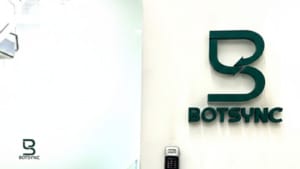The importance of design thinking for small businesses
Starting a company is always a challenge that hides a lot of risks. Usually, business owners are so busy and trying to do everything that they sometimes don’t have the time to take a step back. But...

Starting a company is always a challenge that hides a lot of risks. Usually, business owners are so busy and trying to do everything that they sometimes don’t have the time to take a step back. But this is very important from time to time to just take a moment and observe your business as a whole. Being part of every process is exhausting, and it is not giving you the chance to see if everything connects and works together correctly.
Table Of Content
As a business owner, you know best your initial idea for the business and how it will innovate the market. So, you should be the one that will guide your employees in the right direction and make sure they collaborate in the name of the common goal – the success of the company. Design thinking is here to help you with that. This article will tell you more about what design thinking is and why it is so crucial for small businesses.
What is design thinking?
Design thinking has nothing to do with hiring a designer to create your beautiful site, product interface, or application. But it uses some of the design strategies and golden rules.
Shortly put, design thinking is a problem-solving method that focuses on humans. It is more practical and very much more solution-based than other approaches. The core of design thinking is understanding the needs of a person. The process includes a lot of brainstorming, so it is not something that can do in 10 minutes, but you will see that it will pay off if you invest your time in it.
In a nutshell, for small business owners, it means that you can apply an iterative process similar to the one you will use for the designing process to other business operations and improve your users’ journey. The five steps of the design thinking process are:
- Empathize
- Define the issue
- Explore possible solutions
- Iterate through a lot of testing
- Implementation
Let’s have a look over each of the steps in more detail.
Empathize
As we said, the focus of design thinking is the person’s needs. So, the first thing is to take a step back, take a look at the whole picture and forget about any assumptions you had from before. Put yourself in your customers’ shoes and have a look over your product with their eyes. Even try to go through the customer journey yourself and imagine seeing the product for the first time. Is it easy and understandable, or can some steps be improved?
Define the issue
The truth is nothing is perfect, and there is probably some pain point that can be improved. Make sure you understand those pain points very well and decide which one you should address first. Then think about the following:
- Why is this step an issue for the customer?
- What are the needs of the customer?
- How can you meet those needs in improving this step?
To find the best ideas, you can talk with some of your clients or the newest employees who don’t know your product that well yet. Once the issue is defined, and you have an idea of possible solutions is time for the next step.
Explore possible solutions
You already have some solutions in mind, now is the moment to do some very needed brainstorming. Sometimes, when trying to find the solution yourself, you might be blinded by your deep knowledge of the business as the company founder. This is why it is good to invite more team members to participate.
Try to think out of the box. Come up with very innovative solutions that you wouldn’t usually think of. Yes, they might be called even crazy, but in design thinking is better to be brave and reach further than what you would typically do. Make a list of the possible solutions, and then you are ready to continue with the next phase of the process.
Iterate through a lot of testing
Okay, you have all your solution-based ideas, and now is time to define the best one. It might not be the easiest one, but you should keep in mind that it should be easy to iterate. A/B testing and regular iterations are very often the key to success. It is possible that the solution might not pay off from the first try. But this is completely okay. Rome wasn’t built in a day.
You can repeat the testing process by starting from scratch or making minor changes to your chosen solution. After each testing phase, you will get more and more feedback from the clients, and you can incorporate it in the next cycle. Once you achieve the result you want is time to go to the next and last step.
Implementation
This stage is usually the most time, money, and energy-consuming in any solution-based problem-solving process. But if you did your brainstorming and interaction phase correctly, it should be pretty easy. After this final implementation, you will have to monitor the results and see if you are reaching the goal you set for your business.
Why is design thinking important for small businesses?
When you read about design thinking and its steps, it might seem dry, but once you try it out, you will see it could deliver excellent results. If you start with the solution-based method from the start of your business and get used to it, you will have a way to address issues in a very productive way.
Design thinking can teach you and your team to think out of the box and not fall into the trap of unproductive cycles. This process also allows you to focus more on personalized customer experiences. Not only because in this way you are preventing them from just going to the competitor, but also because if you offer something explicitly made for them, they would be ready to pay for it. When you are just starting a small business, using every competitive advantage is crucial.

With this problem-solving method is very easy to understand your customers better, which is the core of every business. If you know where your clients are facing issues and address them, it will mean that you are taking steps to improve customer retention and loyalty. And all this leads, of course, to increase of your revenue.
Perhaps the most significant benefit of design thinking is that it never lets you fall into the illusion that there is something like a comfort zone. As the name suggests, it requires a lot of thinking, making you reach solutions you would probably never normally even consider. It can easily be implemented in any process and help you find the best solution.
Final words
Design thinking is a solution-based method to solve problems. Going through all the steps will make you see the issue in a new light and think about out-of-the-box solutions. Especially for small companies, this is very necessary because it will help you understand your customers and improve their journey. Doing this will get better results and meet your business goals.













